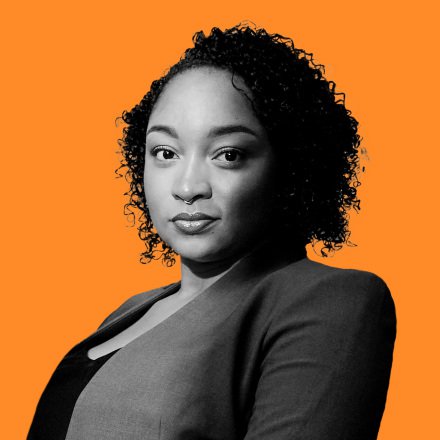In 2018 Kayla Lee joined the enterprise consulting group at IBM, where part of her job is to persuade clients they should be interested in quantum computing. For each client, she says, she needs to figure out the same thing: “How do you make this new technology that is a little bit complicated, and sounds kind of like a science project, relevant to them?”
There are parallels between that work and her other project: leading the launch of the IBM-HBCU Quantum Center, a partnership between the company and 23 historically black colleges or universities, which aims to make quantum computing more accessible to Black students and faculty. Lee wants to give Black STEM students and scholars the foundation to excel in this emerging field.
Through the partnership, HBCUs have access to IBM’s cloud-based quantum computing service, which undergraduates, graduates, and faculty can use for research. The partnership not only supports Black faculty working on quantum projects but provides funding to “seed these research projects,” says Lee. In one example, IBM recently partnered with the International Society for Optics and Photonics to create a faculty award in quantum optics and photonics specifically for IBM-HBCU Quantum Center members.
Lee sees the project as a way to support Black students in an area where they’re grossly underrepresented. In 2017, Black students were awarded just 3% of all bachelor’s degrees in physics in the United States, and only 2% of physics PhDs. What’s more, according to the National Science Foundation, a third of all Black students who have earned doctoral degrees got their bachelor’s degrees at HBCUs, but to date few HBCUs have offered opportunities for students to study or conduct research in quantum information.
Lee aims to change that. She wants the Quantum Center to create “clear opportunities for engagement” and simply show students “what quantum scientists look like.” This is especially important, she says, because quantum computing is such a young field. “We really are at the start of a new model of computation, in the same way that we were at the start of a new model ... back in the ’60s,” she says. “So the questions we’re asking today are: What do the qubit implementations look like? How do we make less noisy qubits? What does that architecture look like?”
But for Lee there’s a further question about quantum computers: “I’m more focused on who gets to use them.”
The question of who gets the opportunities to work on this cutting-edge technology will shape the way the field develops. She points to artificial intelligence, which is already known to be afflicted by problems with racial bias. She says this problem could be exponentially worse in quantum computing, both because of the complexity and inscrutability of the machines and because “there are even fewer representative people” in the field.




